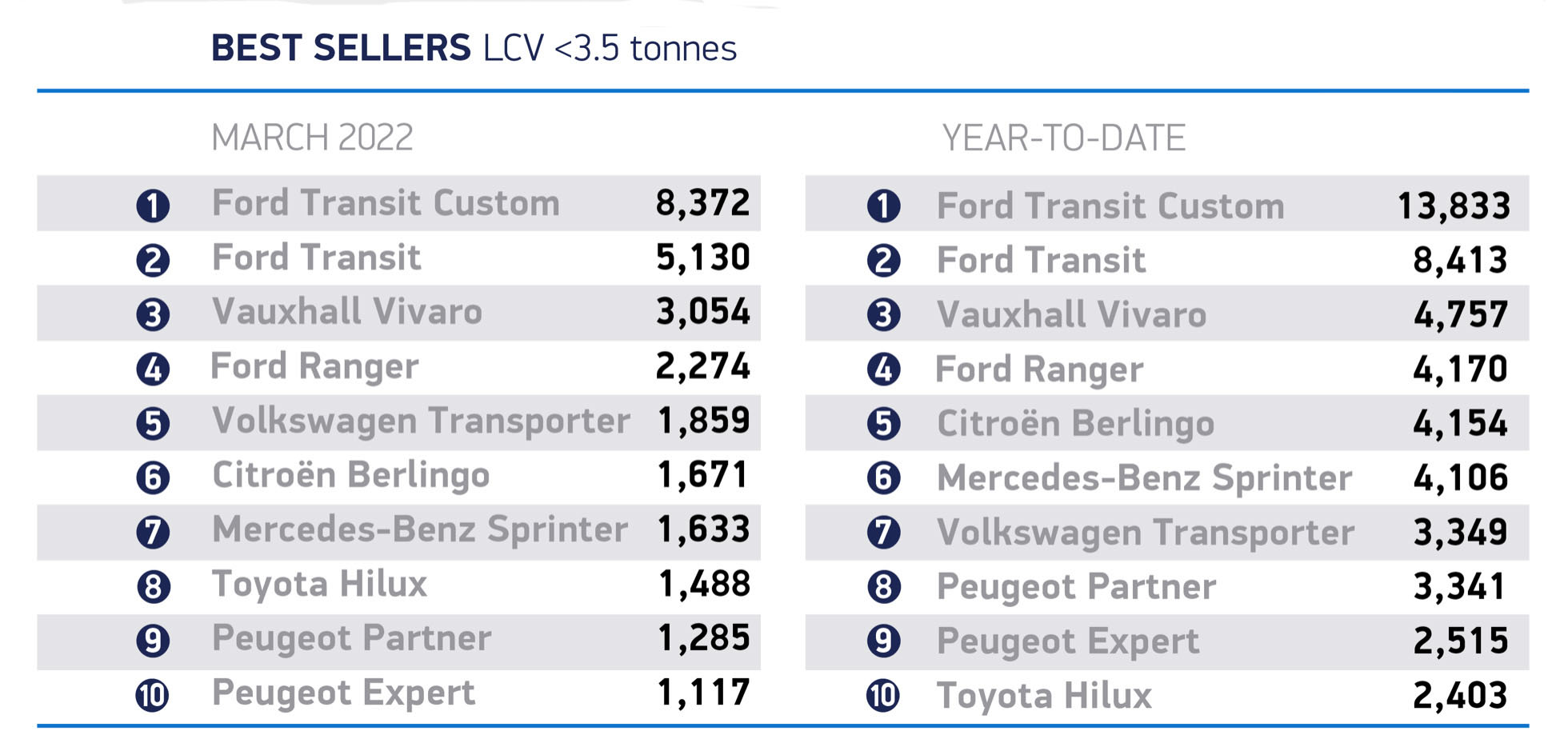The LCV market plummeted by 27.6 per cent to 40,613 units in March versus the same month last year, according to figures from the SMMT this morning (Apr 5).
March usually sees more LCVs registered than January and February combined. However, supply and delivery issues, including the ongoing worldwide shortage of semiconductors, continued to hamper the sector.
A total of 74,344 vans were registered during the first quarter of 2022 – a drop of 23.6 per cent versus the 97,356 registered during same period last year thanks to pent-up demand – while 2019’s first quarter enjoyed 102,743 registrations.
The cyclical process of LCV fleet renewal contributed to a slower first quarter this year, after a period of robust post-pandemic recovery in 2021, said the SMMT.
Battery-electric vans continued to attract interest, though, as businesses renewed their fleets’ look to meet tighter air quality regulations in urban areas, with registrations rising by 17.7 per cent year on year to 1,909 units.
Compared with last year’s first quarter, electric van uptake rose by 68.9 per cent to a market share of 5.8 per cent.
That was more than double a year ago but still some way behind fully electric passenger cars, which grabbed 15.4 per cent of the market share.
Mike Hawes, SMMT chief executive, said: ‘The light commercial vehicle market has made a slower start to 2022 compared with the first quarter of last year, reflecting the cyclical nature of fleet operator investment, amid global supply shortages and increasing economic pressures.
‘Targeted support from government is needed to encourage fleet renewal and a full zero-emission van market.
‘The expansion of the plug-in van grant will be a positive for the sector, but equally there needs to be a greater roll-out of suitable chargepoints to ensure fleet and self-employed van operators in all regions can make the transition.’
The most popular van last month was the Ford Transit Custom, pictured at top, which saw 8,372 units sold.



































